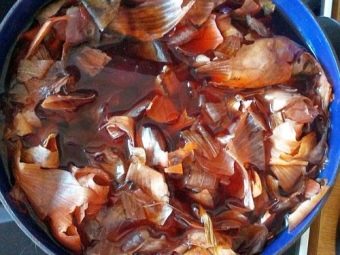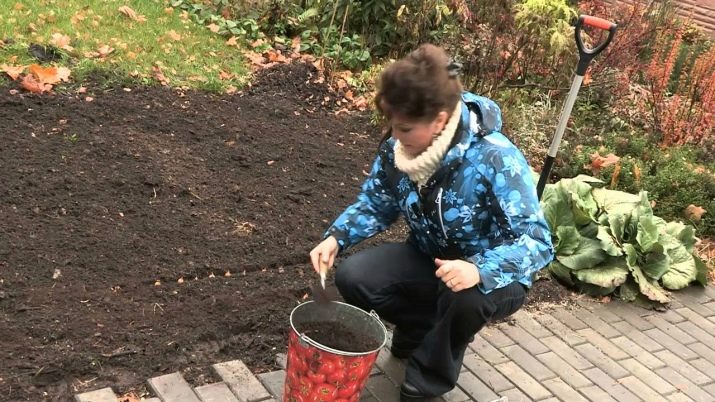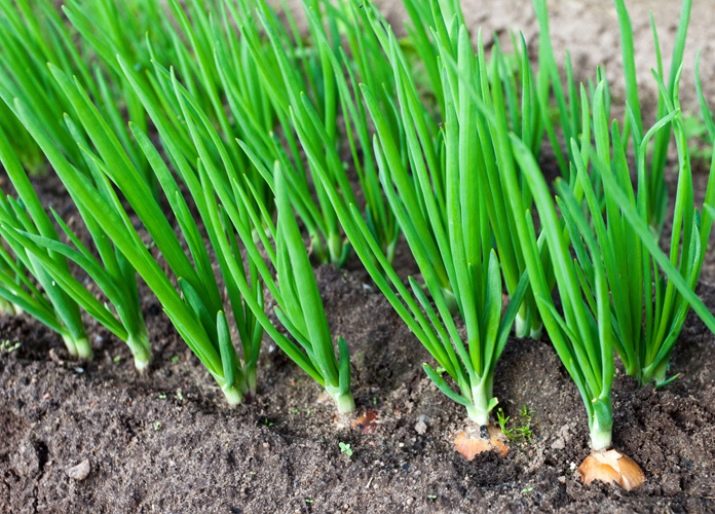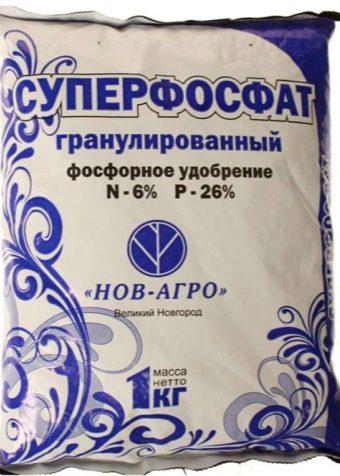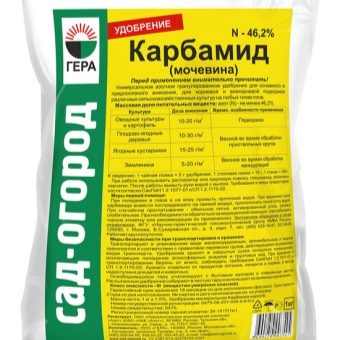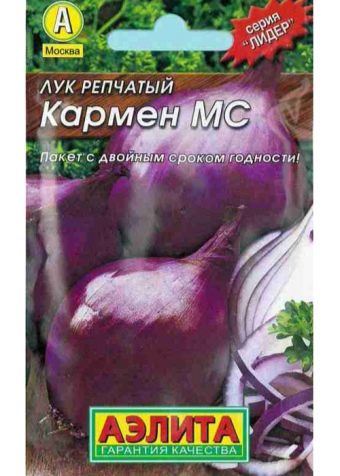How to feed onions?
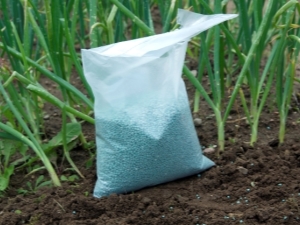
Onions - one of the most common ingredients of home cooking.In addition to saturation with taste, it complements the dishes with the use of vitamins and trace elements. However, this garden culture is not at all unsophisticated and needs feeding during the whole season and earlier before planting - in the fall and spring. Regardless of the shape of the annual variety (winter or spring), onions need to be fed three times per season.
Special features
Get a good harvest of onions without the use of agricultural technology will not work. Moreover, it is important not only to choose the planting material and carefully cultivate the soil, but also to feed the onions with all the necessary substances in time and in the right amount.
To grow onions for turnips, first of all, it is necessary to take into account the need of a plant for sunlight.
To grow large fruit in the northern latitudes, it is better to pay attention to unpretentious varieties. It matters what crops preceded the onion planting on a selected piece of land: onions should be planted at the place of solanaceous, pumpkin, legumes, all kinds of cabbage. Do not plant onions on the same plot of land.
For the cultivation of onions throughout the season, a low level of acidity of the soil (no more than 7 pH) is required. This indicator can be determined by the number of certain weeds growing on the plot: horse sorrel, field horsetail, creeping buttercup grow up on acidic soil.
On the need for watering can be monitored by the appearance of green: dry warns of water shortages, pale - of excess. During periods of no precipitation, the onions should be watered once a week.
It is best to plant onions next to a radish, beet or carrot. And weeds need to be weeded out in order for the fruit to get enough nutrition.
What is needed for growth?
At different periods of the growing season, the vegetable consumes potassium, nitrogen and phosphorus. In this case, the susceptibility depends on the periods of formation of the plant, according to which the top dressing is divided into three stages.
The first portion when you shoot: nitrogen fertilizers for the lush ground part, without which the bulbs can not form. However, it should be borne in mind that the plant does not need to be fertilized with nitrogen, if the green has a saturated color and develops actively.
The second portion: potassium and phosphorus, necessary for the formation of onions. Potassium contributes to the preservation of the fetus during prolonged storage and its presentation. Phosphorus contributes to the growth of yield, plant resistance to diseases.
The third portion: mineral fertilizers with a predominance of phosphorus for the full growth and development of the bulb. Phosphorus develops plant immunity, promotes growth and increases productivity.
It should be remembered that useful elements of onions are absorbed in various quantities:
- nitrogen - 100%;
- potassium - up to 45-50%;
- phosphorus - up to 25-30%.
Types of dressings
Onions can be fed with organic or mineral fertilizers, as well as folk remedies.
Organic matter
They are the least hostile to the plant, restore metabolic processes, correct the structure and contribute to the "breathing" of the soil. They help the stems and turnips to absorb nutrients from fertilizers produced industrially. However, due to the duration of the decomposition process, organic fertilizers retain a large amount of moisture in the soil, it is better to use them in the processing in the fall, during the initial soil preparation, so that in summer during the formation of the fruit they do not attract pests.
In addition, organics can cause bulb rot and significantly reduce the shelf life. Manure, poultry or chicken droppings, humus, ash, bone meal, urea should be moderately put to fertilize onions, which are grown on the feather, since this material is saturated with nitrogen. Some fertilizers should be put in open ground.
Mineral fertilizers
Fertilizers such as potassium, nitrogen, phosphorus, ammonia, salt, ammonium nitrate, iodine and others have indisputable advantages over organic matter, they do not contain impurities, therefore, the process of impact on the plant is easy to observe and control. When soil is depleted it is especially useful to fertilize with minerals, because it absorbs excessive moisture due to its absorbing properties and promotes better absorption of vitamins and microelements.
Nevertheless, mineral dressings should be carefully used, since the concentrate can harm both the fruit and the stems. Therefore, it is necessary to exclude the ingress of the mineral solution on the greens, and a day after feeding, it is desirable to irrigate the plant abundantly with clean water.
You can opt out of the independent selection and mixing of mineral components, since ready-made complex fertilizers are easier to acquire at the horticultural sales centers.
Folk remedies
In the first dressing, when you shoot, you can use tinctures from cow, horse or chicken manure: manure (1 l) to insist on water for a week (20 l). Infusion is used in a ratio of 1:10.
Ash fertilizer is suitable for growing onions both on turnips and on feathers. During the periods of emergence and turnip formation, the plant perceives yeast top dressing well: 5 liters of warm water, 250 grams of breadcrumbs, 250 grams of green grass, and insist the same amount of yeast for 2 days and water the plant under the root. Such top dressing is relevant for heated and wet soil, so in the late fall and early spring it should not be made.
Onion peel can be used as a universal fertilizer for both garden and indoor plants. It is not difficult to prepare this fertilizer: boil the husk for a few minutes, then insist in cool water.
Husk can be applied to the soil in the spring before digging the soil or just before planting the seedlings and seeds laid in the hole.
Timing
Consider when to fertilize correctly for feeding onions.
In the autumn
First of all, it is necessary to pre-select a dry area of virgin soil accessible to the sun. To reduce the level of acidity, the land can be fertilized with lime.
It is worth preparing the soil in autumn so that it can give a good harvest. This is the main stage of feeding onions. The day before the fertilizer procedure, the soil should be disinfected with a solution of water (10 liters) with copper sulphate (15 g), which will be enough for irrigation of 5 square meters.
Clay soil must be enriched with sand, peat, lime and ash. It is best to dig up the soil in the spring, as this reduces the risk of infectious diseases, the number of overwintered insect pests. And also the moisture at this time more steadily lingers in the soil.
After loosening the beds and plowing the land with a cultivator (20 cm), each square meter should be fertilized with dolomite flour (no more than 150 g) and chalk. It is possible to lower the level of acidity of the medium with the help of wood ash, however, most of this material should be added in spring, when melted water comes down.
Mineral fertilizers are also suitable for this stage: 20-30 g of superphosphate per square meter. You can use Fertika - a complex in granules with a low content of nitrogen, nitroammofosku or potassium sulphate. The following recipe is universal for this stage:
- 3 kg of organic matter (humus or compost);
- 1 tbsp. l superphosphate;
- 1 tbsp. l ash;
- 1 tbsp. l nitrofoski.
However, there are some nuances. Clay soil should be fertilized with more organic matter than mineral fertilizers; additionally, washed sand (10 kg), kramzite (100 g), peat (5 kg) should be added per square meter. Marshy soil will require enrichment with limestone, potassium and phosphorus. On chernozem one should plant siderats - plants planted specifically for fertilizing the soil should be fertilized with organic matter. Sandy soil is less suitable for growing onions.
When planting a variety for the winter, the soil should be treated in advance, from 2 to 4 weeks before planting, so that the soil absorbs valuable trace elements.
At this stage it is not recommended to enrich the soil with the following material:
- fresh manure;
- fertilizers with high nitrogen content.
Potassium-phosphorus fertilizer mixture helps to restore the nutritional properties of the soil.
The preparatory stage will provide the plant with a nutrient-rich breathable environment. It is also necessary due to the fact that onions especially deplete the soil, absorbing all the nutrients.
Secondary prepare the ground
Re-prepare the ground should be in March. Compacted soil must be diluted with sand and peat. As well as for spring digging, wood ash, potassium sulphate, potassium chloride or other natural potash fertilizers can be used as fertilizer. Wood ash should be distributed in the ratio of 1 cup per square meter.
It is important not to mix superphosphate and calcium nitrate - a chemical reaction will result in the release of harmful substances.
If the preliminary top dressing was not carried out in the autumn, in spring the soil should be fertilized with such composition (per square meter):
- humus (5-6 kg);
- urea (20-25 g);
- superphosphate (30 g);
- potassium salt (15-20 g).
For breeding onions for turnips during this period the following mixture will be suitable for enriching the soil (2-3 square meters depending on the degree of moisture):
- water (10 l);
- mullein (1 cup);
- urea (1 tbsp. l.).
Landing material
Material for planting needs special treatment, which is aimed primarily at protection from fungal infections. Preparation of seedlings before planting is best carried out in three stages.
Warming up: Keep seedlings in hot water (70 degrees) for 1-2 minutes, then leave cold for one minute.
Before planting, the seeds must be washed with clean water. The procedure should be carried out sequentially and immediately before landing.
Onions are planted in spring: in early May in mid-latitude, and in warm climates - in mid-April.
With the emergence of shoots
The next feeding of the plant is required with the appearance of shoots two weeks after planting, when the plant reaches 10 cm in length. If planting was carried out in May, the plant will rise in June. For the early stage of plant development, it is necessary to nourish the stems. A universal folk remedy that compensates for the lack of nitrogen is a solution of water (10 liters) and liquid ammonia (3 tablespoons). An additional useful feature is that the strong smell discourages insect pests. At the same time, the plant can also be watered and sprayed with carbamide for onions (that is, urea).
It should be noted that if during the second summer feeding period there is heavy precipitation, nitrogen fertilization should be postponed, otherwise the element will easily dissolve in water and will not have time to digest in the soil.
At the end of June - the first half of July
After another three weeks, at the end of June - the first half of July, it is necessary to produce nitrogen-potassium fertilizers in the feed, during this period the plant needs the most potassium for the development of the bulb. The complex mixture is easy to use according to the instructions. The procedure is recommended in the evening after watering or rain. Solutions should be injected into the soil, avoiding contact with greens, as this may lead to yellowing of feathers.
But also in this period of feeding you can use the infusion on the weeding material. For this fit any grass. Shredded material should be mixed with yeast (1 tablespoon. For 3 liters of water), let stand for 3-4 days, then remove the grass remains and dilute in 1/3 ratio.
The plant, planted in light soil, requires additional feeding in August, as with a low clay content, nutrients are quickly washed out. Wood ash contains the necessary potassium and phosphorus at this stage. For watering, you need to insist 200 g in boiled water for 2-3 days.
The final ripening of onion sevok and other varieties of onions occurs by the end of July or in early September, it depends on weather conditions. The plant is ready for collection and consumption, if the stems stop growing and lie on the ground, the onion neck becomes softer and thinner, and the color of the fruit becomes characteristic of the variety.
Care
In July, the state of the plant becomes apparent. The following symptoms indicate a lack of nutrition:
- if the feathers grow hard, have a dull shade and yellow spots, then the plant lacks nitrogen;
- if there is a shortage of potassium, necrosis of the feather occurs, the edges of the lesion gradually move towards the onion;
- the plant lacks phosphorus if large brown flaws are formed on the stems, in which case it is worth fertilizing the soil with superphosphate;
- twisted greenery and spread soil indicates a zinc deficiency;
- A thinned white feather is a sign of copper deficiency.
It is noteworthy that these symptoms appear, as a rule, in a complex, indicate depletion of the earth.
At the end of July, it is recommended to trim the longest feathers of the onions, otherwise the bulb will not receive enough nutrients and will grow poorly.
Bulbs that are 4 cm in diameter are considered mature. Especially for growing large onion heads choose the following varieties:
- "Centurion";
- Sturon;
- "Texas Yellow".
The stage of fruit ripening (end of July - August) should be carried out especially carefully. When using dry mixtures for fertilizer, regular watering is necessary, along with the loosening of moist soil to ensure free air flow to the roots. Onion neck should remain dry, this will prolong the shelf life of the fruit.
By August, watering should be completely stopped: two weeks before full maturity, the degree of moisture will affect the taste of the fruit - onions will be sharper if contained in dryness. The following varieties have the least pungent taste of the fruit:
- Carmen;
- "Hercules";
- "Sturon".
The most frequent onion diseases are caused by cooling (when water is used for irrigation below +18 degrees): powdery mildew, bacteriosis, white rot. And also onion flies, aphids, nematodes (roundworms) can be carriers of diseases, therefore, if they are detected, it is necessary to make a pest control.
However, it is possible to protect the crop against the harm of infection even at the stage of tillage before planting.
When feeding, it is recommended to observe the following conditions:
- pen processing is best done in the evening;
- the day before feeding onion ridges should be watered with warm settled water;
- when applying fertilizer watering can not use the nozzle with a diffuser;
- fertilizer procedure is completed by irrigation with clean water;
- loosen the soil the next day.
For more information on how to feed onions, see the following video.















